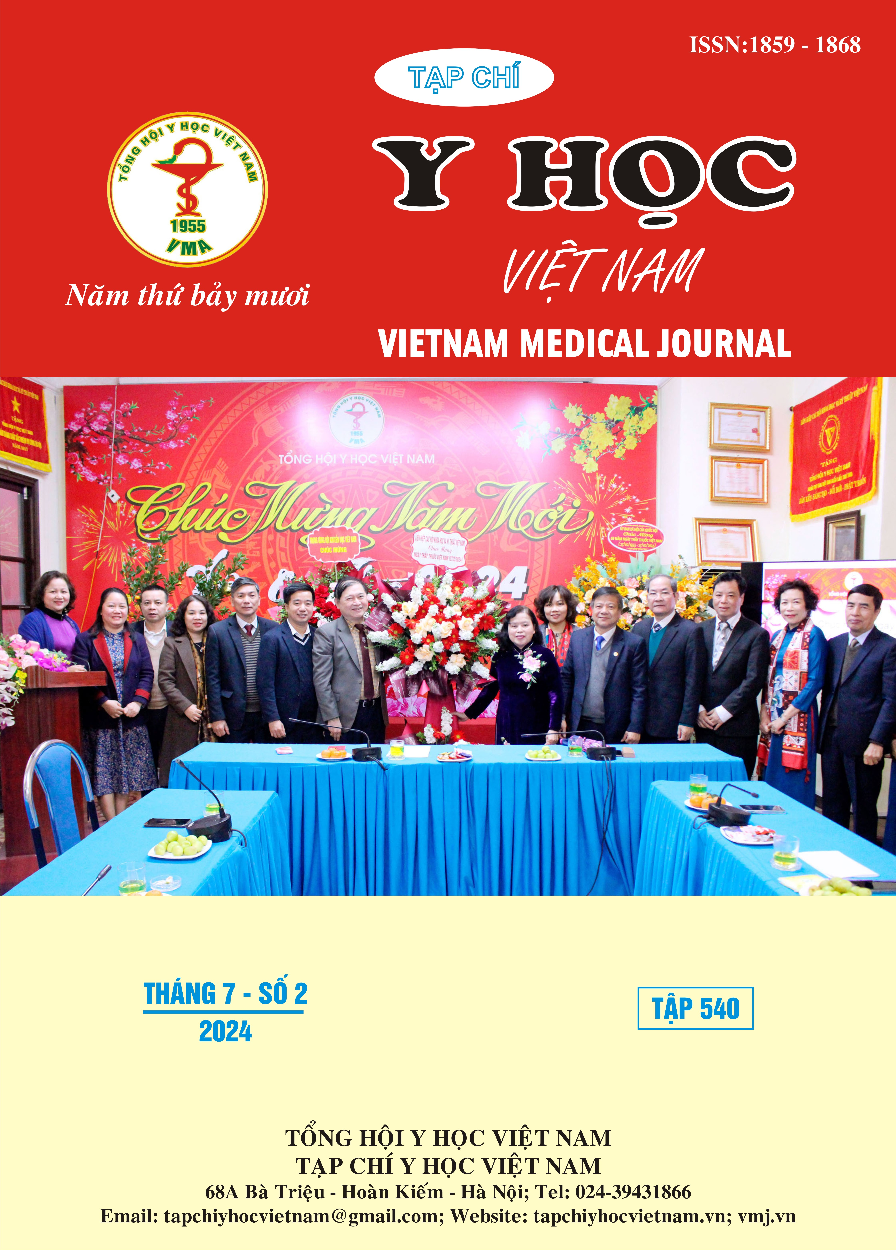MODE OF DELIVERY AMONG THIRD TRIMESTER PREGNANT WOMEN AT HANOI OBSTETRICS AND GYNECOLOGY HOSPITAL IN 2023
Main Article Content
Abstract
The use of cesarean section as a method of childbirth is increasing, one of the identified reasons for this trend is the preference and active choice of expectant mothers for this method. Therefore, we conducted this study with the objective of investigating the preferred mode of delivery among pregnant women in the last three months of pregnancy and identifying factors influencing their decision-making process. Subjects and research method: A cross-sectional study was conducted on 355 pregnant women in their last three months of pregnancy who sought antenatal care at Hanoi Obstetrics & Gynecology Hospital from July 2023 to December 2023. Results: The results revealed that 80.28% of the participants expressed a preference for vaginal birth, while 19.72% indicated a desire for cesarean section. The strongest predictor of a pregnant woman's decision to opt for a cesarean section is the intention to choose the time of birth (OR = 28.05, p< 0.05). Additionally, pregnant women who were religious, employed, and were multiparous women are more likely to choose a cesarean section, with odds ratios of 3.14, 6.07, and 2.56, respectively, compared to other pregnant women (p< 0.05). Conclusion: Despite the preference for vaginal delivery among many participants in this study, there was also a notable proportion who expressed a preference for cesarean section. Further in-depth studies are needed to determine necessary interventions for reducing the cesarean section rate when there is no medical indication.
Article Details
Keywords
mode of delivery, preference, decision-making, pregnant women.
References
2. Tổng cục Thống kê và UNICEF. Báo cáo kết quả Điều tra các mục tiêu phát triển bền vững về trẻ em và phụ nữ Việt Nam 2020-2021. 2021. https://www.unicef.org/vietnam/vi/bao-cao/dieu-tra-cac-chi-tieu-phat-trien-ben-vung-ve-tre-em-va-phu-nu-viet-nam-2020-2021
3. World Health Organization. Appropriate technology for birth. Lancet. 1985;2:436-437.
4. Shi Y, Jiang Y, Zeng Q, et al. Influencing factors associated with the mode of birth among childbearing women in Hunan Province: a cross-sectional study in China. BMC Pregnancy and Childbirth. 2016;16:1-9.
5. Ugwu NU, De Kok B. Socio-cultural factors, gender roles and religious ideologies contributing to Caesarian-section refusal in Nigeria. Reproductive health. 2015;12(1):1-13.
6. Ninh Thị Ly, Võ Thành Lợi. Mong muốn lựa chọn phương pháp sinh con và thực tế chỉ định sinh của các thai phụ đến khám thai tại bệnh viện sản–nhi cà mau. Tạp chí Y học Việt Nam. 2022;514(2)
7. Oyewole W, Umar A, Yayok R, Shinaba S, Atafo C, Olusanya M. An Evaluation of the Factors That Influences Caesarean Section in FCT Hospitals, Nigeria. IOSR Journal of Nursing and Health science. 2014;3(5):44-51.
8. Nuampa S, Ratinthorn A, Lumbiganon P, et al. “Because it eases my Childbirth Plan”: a qualitative study on factors contributing to preferences for caesarean section in Thailand. BMC pregnancy and childbirth. 2023;23(1):280.


